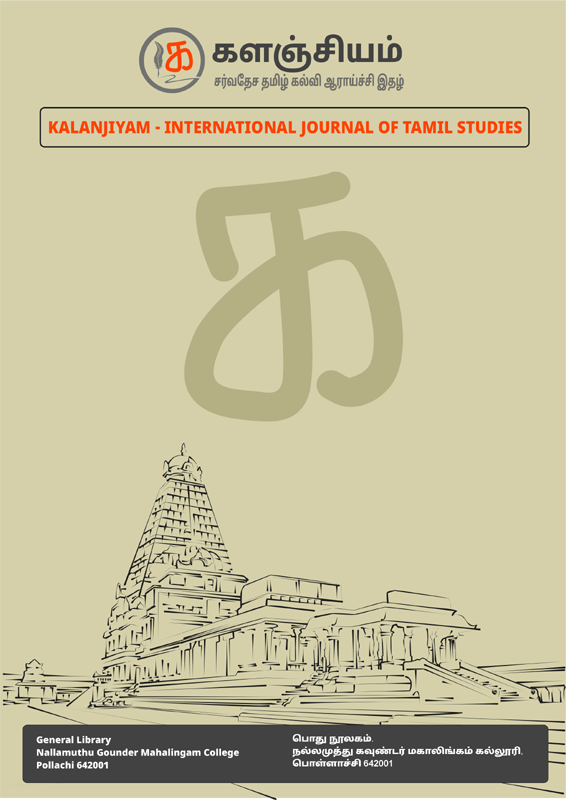சேனைப் பயிர்ச்செய்கையும் நிலவளம் தொடர்பான சவால்களும்
ம.ஜனனி மற்றும் ச. தவப்பிரபா புவியியல் துறை, கிழக்குப்பல்கலைக்கழகம், இலங்கை mjanani74@gmail.com and thavaprabas@esn.ac.lk
DOI:
https://doi.org/10.35444/Keywords:
சேனைப்பயிர்ச்செய்கை, மண்பரிசோதனை, சேதனப்பசளை, அசேதனப்பசனை, மின்கடத்துதிறன், phAbstract
சேனைப்பயிர்ச்செய்கை வாழ்வாதார தொழிலாக காணப்படுவதோடு அதிக வருவாயையும் ஈட்டிதருகின்ற தொழிலாகவும் தற்காலத்தில் மாறி வருகின்றது. இலங்கையின் மட்டக்களப்பு மாவட்டத்தில் ஏறாவூர்ப்பற்று பிரதேசசெயலாளர் பிரிவில் சேனைப் பயிர்ச்செய்கையானது அதிகளவில் மேற்கொள்ளப்பட்டு வருகின்றது. இப் பிரதேசசெயலாளர் பிரிவில் சேனைப் பயிர்ச்செய்கை மேற்கொள்ளும் நிலங்கள் வளம் தொடர்பாக எதிர்கொள்ளும் சவால்களை ஆராய்தலினை அடிப்படை நோக்கமாகக் கொண்டு முதலாம் மற்றும் இரண்டாம் நிலை தரவுகளைப் பயன்படுத்தி இவ்வாய்வு மேற்கொள்ளப்பட்டுள்ளது. இதற்காக ஏறாவூர்ப்பற்று பிரிவிலிருந்து சேனைப்பயிர்ச்செய்கையில் ஈடுபடும் ஐந்து பிரதேசங்களிலிருந்து மொத்த குடும்பங்களில் 12 சதவீதமானவர்களுக்கு என்ற அடிப்படையில் 100 வினாக்கொத்துக்கள் வழங்கப்பட்டு தரவுகளும் தகவல்களும் பெறப்பட்டன. இதனை விட கலந்துரையாடல், நேரடி அவதானிப்பு மூலமும் தகவல்கள்; பெறப்பட்டன. மேலும் இரண்டாம் நிலைத்தரவுகளும் பெறப்பட்டு அளவு ரீதியாவும் பண்பு ரீதியாகவும் ஆய்வில் விளக்கப்பட்டுள்ளன. இவ்வாய்வில் சேனைப்பயிர்ச்செய்கையினை தொடர்ச்சியாக மேற்கொள்ளும் போது மண்தரமிழப்பு ஏற்படுகின்றதா என்பதனை கண்டறிவதற்காக ஆய்வுகூடப்பரிசோதனைகளும் மேற்கொள்ளப்பட்டுள்ளன. காடுகளை அழித்து முதலாம், இரண்டாம், மூன்றாம், நான்காம் தடவை சேனைப்பயிர்ச்செய்கை மேற்கொள்ளும் இடங்களில் இருந்து 20 மண் மாதிரிகள் சேகரிக்கப்பட்டு மண்ணின் pH, மின்கடத்து திறன், நைட்ரஜன், பொசுபரசு, பொட்டாசியம் ஆகியவை ஆய்வுக்குட்படுத்தப்பட்டன. மண்பரிசோதனைக்கூடாக தொடர்ச்சியாக சேனைப்பயிர்ச்செய்கை செய்யும் போது மண்ணின் வளம் குறைவடைவதினை உறுதிபடுத்தக்கூடியதாக இருந்தது. ஆய்வுப்பிரதேசத்தில் 64 சதவீதமானோர் அசேதனப் பசளையினையும் 36 சதவீதமானோர் சேதனப்பசளையினையும் பயன்படுத்தி சேனை உற்பத்தியினை மேற்கொள்வதை அறிய முடிந்தது. அத்துடன் சேனைப்பயிர்ச்செய்கை மேற்கொள்ளும் நிலங்களில் வளம் தொடர்பான சவால்களும் இனங்காணப்பட்டு அதற்கான தீர்வுகளும் இவ்வாய்வில் முன்வைக்கப்பட்டுள்ளது.
Downloads
References
Arun Jyoti Nath, Biplab Brahma, Rattan lal and Ashesh Kumar das (2016) Soli and jhum cultivation Bol.Mus.Para.Memflio orest Research Institute, Post Office New Forest, Dehradun -248 006 Uttarakhand 2Environment Management Division, ICFRE, P. Office New Forest, Dehradun, Uttarakhand
Gandhi kafle (2011)”an overview of shifting cultivation with reference to Napal” Department of Watershed Management and Environmental Science, Institute of Forestry, Hetauda Campus, Hetauda, Nepal.
Kaushik Bhagawati, Goutom Bhagawati, Ranj an das ,Bhagwati and Ngachan (2015) The Structure of Jhum(Traditional Shifting Cultivation System): prospect or Threat to Climate) Environment geography, Department In India kurasiya kalanthar (2013) “A case study of Cultivation Areas in pottuvil Ds divisoin” Department of Geography, South Eastern University of Sri Lanka, Oluvil, Sri Lanka.
Panda, Afsr Alan, Sukanta sanricar (2019) “Shifting Cultivation in North – East India : Trend, Benefits and Challenge Inverstigaciones geography North – East India
Rahman , Rahaman , Farhana and Codilan (2007) “Analysis of the economic benefits from systematic improvements to shifting cultivation and its evolution towards stable continuous agroforestry in the upland of Eastern Bangladesh” agriculturl and forest, Bangladesh
Rasul, Thapa (2003) “Shifting Cultivation in the Mountains of Southeast Asia: Regional patterns and Factors influencing the change” Centersforsoutheast asian
Sohag miah, Sirajul , Wahida Sumi and Mohammad mosharra hossain(2014)”Effects of shifting cultivation on biological and biochemical characteristics of soli microorganisms in Khagrachari district, bangaladesh” Mizorm University, Bangaladesh
Downloads
Published
Issue
Section
License
Copyright (c) 2022 ஜனனி ம புவியியல் துறை, கிழக்குப்பல்கலைக்கழகம், இலங்கை , தவப்பிரபா ச புவியியல் துறை (Author)

This work is licensed under a Creative Commons Attribution 4.0 International License.
Kalanjiyam - International Journal of Tamil Studies are published open access under a CC BY license (Creative Commons Attribution 4.0 International License). The CC BY license allows for maximum dissemination and re-use of open access materials and is preferred by many research funding bodies. Under this license users are free to share (copy, distribute and transmit) and remix (adapt) the contribution including for commercial purposes, providing they attribute the contribution in the manner specified by the author or licensor http://Creativecommons.org//license/by/4.0/.. It allows to use, reuse, distribute and reproduce the original work with proper citation.

This work is licensed under a Creative Commons Attribution 4.0 International License.
Copyright
Authors who publish with International Journal of KALANJIYAM - International Journal of Tamil Studies agree to the following terms: Authors retain the copyright and grant the journal non-exclusive publishing rights with the article simultaneously licensed under a Creative Commons CC-BY license that allows others to share the work with an acknowledgement of the work's authorship and initial publication in this journal.






